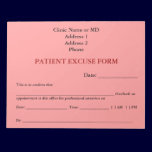The days when hospitals or health systems paid physicians a straight salary may be coming to an end. As medical institutions aim to make physicians become more productive or reach certain benchmarks of quality or patient satisfaction, new payment structures have come into play.
"The flat salary contracts that we have seen in the past are now very rare," said Cheryl Waltko, vice president of Equation Consulting in Nashville, Tenn. "There may still be some out there, but it may just be that they have not been revised yet."
Compensation arrangements vary widely. Some still include a base salary; others don't. Experts advise physicians on several steps they can take to ensure that their pay is commensurate with their work -- and factors to consider before signing on the dotted line.
The move toward more complicated compensation formulas is a legacy of the 1990s, when health systems bought medical practices for what are now viewed as inflated sums and put physicians on salary. Institutions lost money, and many practices were sold back to the original owners. Hospitals and large health systems are trying to make today's purchases smarter.
Hospitals "don't want to make the same mistake again. They are creating arrangements much more carefully to really promote and factor in whatever strategic goals the organization has," said Todd Sagin, MD, national medical director of HG Healthcare Consultants in Laverock, Pa., and one of the authors of Creating the Hospital Group Practice: The Advantages of Employing or Affiliating with Physicians.
To set compensation packages, most institutions will use financial and productivity benchmarks developed by organizations such as the Medical Group Management Assn. or the American Medical Group Assn., or use combinations of available data. This information is expensive if a physician tries to purchase it directly, but potential employers should be able to provide the data used as a basis for an offer.
For example, according to MGMA's "Physician Compensation and Production Survey: 2010 Report Based on 2009 Data," released June 22, primary care physicians are paid an average of 52 cents for every dollar collected by a hospital-owned practice, but only 47 cents in a nonhospital-owned practice. (This varies widely with location.)
Financial history
If a physician already is established in a community, financial information from the doctor's past three years in practice also will play a role in developing productivity targets. Physicians who are not established in a community should ask for local historical financial data. If that is not available because the practice or service line is too new, other demographic and projection information can be used.
Many factors should be considered: Is the community large enough for a physician to meet particular targets? Is there a surfeit of physicians of a particular specialty in one location that would interfere with one physician's productivity? What is the hospital's reputation in the community, and could that block a physician from caring for a certain number of patients?
"Is there adequate patient demand for [physicians] to meet their productivity targets?" asked Jeff Milburn, one of MGMA's principal consultants. "I have seen physicians who are put on production and are willing to work hard, but the demand is not there."
Experts say physicians should consider if the proposed compensation formula makes sense for the specialty, the practice and the community, and consult with an attorney or accountant if necessary. Doctors need to set attainable productivity targets. Physicians just finishing a residency or fellowship most likely will need a "ramp-up" period of one to three years when they are paid a guaranteed salary, but established physicians most likely will not.
"To make it work for both the hospital and the physician, the target has to be something that is reachable," said Gregory Piché, a health care lawyer and a partner in Holland & Hart in Denver.
Possible formulas include those based on the amount of money charged without consideration for the actual money coming in or expenses. This is called gross charges, although basing the formula on collections is far more common. The effect of these formulas will vary depending on the patient mix. For example, total receivables minus expenses usually will work better if most of the panel is on private insurance.
Medicare RBRVS model
Using a compensation formula based on relative value units derived from the resource-based relative value scale used by Medicare and other insurers is increasingly common. This can take the form of either total RVUs, which account for all that physicians actually do, or work RVUs, which take into consideration only patient-physician encounters.
Other institutions will develop formulas that use the number of patient encounters, which experts say can work well if most of the patient population is on Medicaid or another program that does not reimburse well. Some specialties are more likely to be paid an hourly rate, because they have less control over patient volume.
"Emergency department doctors are very dependent on what walks in the door. There's not a whole lot they can do to generate more business beyond reaching outside and dragging people in. That's frowned on in most circles," Milburn said.
Sometimes metrics and payments are negotiable. Those who employ doctors say they often can adjust within the range established by benchmarking data. Time off or continuing medical education funding also may be bargaining points.
But whatever the formula, experts say physicians must understand it. The formulas tend to be complicated, but those hiring physicians should be able to provide examples of how different levels of productivity affect the compensation level.
"Physicians should understand what they are signing and make sure that they are able to meet their commitments. That's really the most important thing," said Stuart G. Kertzner, partner in charge of the health care practice group at Gettry Marcus Stern & Lehrer in New York. He also is a spokesperson for the National CPA Health Care Advisors Assn.
Most physician contracts usually last one to three years. Experts advise renegotiating when they come up for renewal. Many also expect compensation arrangements to continue to evolve as health system reform is implemented.
Missing the target
If physicians do miss productivity targets, they aren't likely to lose their jobs, although take-home pay most likely will be on the low end. In the rare cases in which hospitals lay off clinical staff, productivity is sometimes a factor in determining which physician to let go.
Some physicians also may leave a hospital or medical practice voluntarily if they feel the formula does not provide appropriate compensation. Sometimes a formula may need to be renegotiated.
"We don't fire people for low productivity," said Adam Singer, MD, chair and CEO of IPC: the Hospitalist Company based in California. "If a physician has minimal volume, there are usually other stressors" in his or her life, he added. "We work with him or her."
Sometimes, however, lower productivity may be an acceptable choice for all parties. Those who manage physician practices say some doctors choose to be less productive to have a better work-life balance. In addition, hospitals and medical practices often glean other benefits from keeping a physician on, even if he or she is not highly productive. These may include maintaining a referral base or having more cover for call or time off.
And while some physicians earn the low end of a productivity formula, others may shoot for the high end. Many systems issue monthly productivity reports as a motivating tool.
"[Physicians] know exactly what their salary is going to be, and there are no surprises," said Sharon A. Adams, vice president of physician services at Pro Health Inc. in Pekin, Ill. Her physician practices are in the for-profit arm of Pekin Hospital and recently moved to using work RVUs to measure physician productivity. Those new to the practice are provided a guaranteed salary for two years before moving to being compensated 100% on productivity.
Many compensation formulas, however, do stop at a certain level to avoid burnout and maintain quality.
"We have a cap so physicians do not just do more and more and more," said Rick Napper, president and CEO of Magnolia Regional Health Center in Corinth, Miss. His institution pays physicians a salary plus a share of revenue based on productivity and quality indicators. "If they are significantly more productive than that, then I have probably set the base wrong anyway."
ADDITIONAL INFORMATION
_______________
15% Off ALL Products! Use Code: MAKEHERSMILE Ends Today!
 |  |
$4.50 - Thank You Note Cards
see on 2 styles














































No comments:
Post a Comment